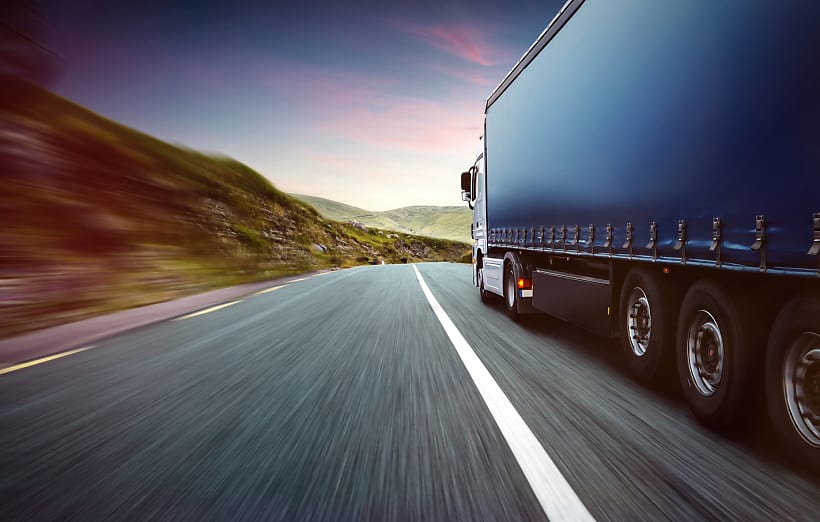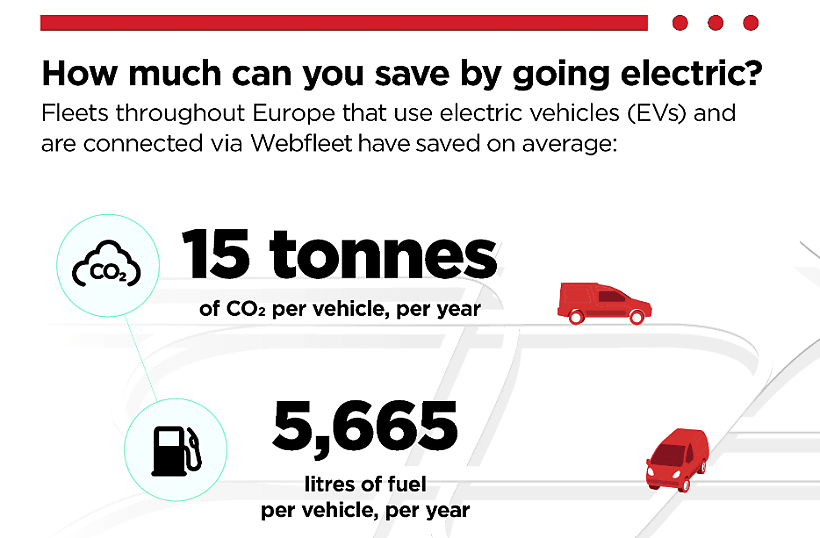There’s no easy way to say this, and it highlights the importance of fleet sustainability: An estimated 385,000 people die prematurely from vehicle emissions in a single year. That’s according to the UN in its “Shifting gears for sustainable transport” video, which helped promote the 2021 Global Sustainable Transport Conference. This year, on 26 November, the UN will take transport sustainability further with the first World Sustainable Transport Day, initiated to raise awareness and promote action around sustainable mobility.
For more than a decade, world leaders have recognized that sustainable transport is key to economic growth, along with the health of people, our communities and the environment all life depends on. We mention the tragic losses at the start of this post because it highlights what’s at stake. Decarbonising the transport sector isn’t a luxury. All of us need to act with care and urgency.
So, what can our sector do to act with care and urgency? We highlight three simple but effective actions fleets can take right now to operate more sustainably, for the benefit of business as well as planetary health. These actions can help you reduce your carbon footprint and improve efficiency, no matter your fleet size or vehicle composition.
Three actions for greater fleet sustainability
1. Offset your emissions by restoring nature

How do you run an environmentally responsible business while keeping costs under control and your vehicles on the road? At Webfleet, we don’t see these as separate objectives. That’s why we’re teamed up with Justdiggit, a global partner of the UN’s environment programme dedicated to landscape restoration. Together, we’ve created Green Your Fleet, a programme that helps Webfleet customers offset their fleet CO2 emissions by regreening degraded land in Tanzania.
Since 2020, participating fleets have been making a positive impact that brings back trees while uplifting local farmers and their communities. Buratti, an Austrian importer and wholesaler of Italian goods, is an inspiring example of what fleets can achieve through Green Your Fleet. The company, which has 17 vehicles connected to Webfleet, is helping regreen 640,000 square metres of dry land, restoring it with more than 2,600 trees. As Buratti’s CEO says, “You can do something good with a small effort.”
Another inspiration is Autocars Fuentes, a family business that runs a passenger transport fleet in and around Barcelona. By joining Green Your Fleet, Autocars Fuentes will regreen a 102,000 square-metre area of dry land, helping bring back more than 400 trees. In actively aiming for net zero, the company also tracks its fleet emissions and fuel consumption, efforts that have resulted in a 10.8% reduction in operational CO2s.
Ready to lower your fleet’s carbon footprint through Green Your Fleet? Get started by visiting the programme website, where you can calculate your fleet’s CO2s and read the programme FAQs.
2. Minimise the amount of waste your fleet produces

Since properly inflated and aligned tyres help prevent accidents and reduce fuel consumption, you likely perform regular checks. Doing regular checks also extends tyre lifespan, reducing your overall spend and the amount of waste produced from worn tyres.
To make the most of your tyre budget, considering using a solution like Bandag FuelTech® retreads. Up to 75% of retreads consist of recycled and reused materials. Your fleet can count on high-quality tyre performance and durability at a lower cost while minimising its environmental impact.
Preventative vehicle maintenance is another aspect of sound waste management. By following the recommended service intervals and replacing parts when needed, you can prolong the life of your vehicles and limit the need for new ones. Of course, regularly scheduled maintenance also means you can proactively address issues that could affect your fleet’s safety or productivity.
With all this said, you’ll eventually need to retire vehicles or some of their parts. When that time comes, aim to recycle as much as possible. Many components can be recycled or reused, as noted by Fleet Equipment: tyres, seats, windows, oil, metal and batteries. Follow local regulations and guidelines with hazardous waste. Chemicals like brake fluid and antifreeze can contaminate soil and waterways if not disposed of appropriately.
Discover the latest tyre technology
Read our eBook on leveraging tyre innovations for safety and sustainability
3. Accelerate your electrification goals

Globally, transport CO2 emissions jumped 3% last year. According to the International Energy Agency, that spike is the result of a bounce back in passenger and cargo transport activity following the COVID-19 slump in 2021. For the UK and the EU alike, transport generates more greenhouse gases (GHGs) than any other sector: 24% in the UK and 25% in the EU.
In terms of vehicles, trucks and buses generate more than 35% of direct CO2s from road transport—while representing fewer than 8% of vehicles. Emissions from cars and vans haven’t grown beyond pre-pandemic levels, yet light-duty vehicles still contribute 10% of the world’s energy-related CO2s.
There’s undoubtedly room for improvement when it comes to decarbonising fleets. At the same time, electrification is ramping up. In the first half of 2023, hybrid and battery EVs comprised more than half of all vehicle sales for the business contract hire market. Fleets are driving significant growth in electric vehicles (EVs), by more than triple that of individual consumers.
Lack of charging infrastructure has been a concern for fleets eager to electrify. But soon, policy directives and data insights should make this concern obsolete.
From 2025, the EU plans to deploy fast charging stations for cars and vans at every 37 miles (60km) along the Trans-European Transport Network, or TEN-T. Recharging stations for heavy-duty vehicles will also be installed every 37 miles. (Worth noting for fleets that are using other alternative fuels as part of their transition strategy: Hydrogen fuelling stations for cars and HGVs will start dotting the TEN-T from 2030 on.)
In the UK this past August, Webfleet set a new Guiness World Records™ title for driving an electric van more than 311 miles (500km) on a single charge. How did our sponsored team of drivers do it? By monitoring GPS and battery level data—and equipping the van with energy efficient tyres from Bridgestone. This proves that energy efficient driving habits, backed by clear data, are key to maximising range.
Webfleet data shows that, on average, fleets with EVs prevent emitting 15 tonnes of CO2 per year, per vehicle. Another key benefit of going electric is saving on costs. Our data also shows that fleets with EVs can save around 5,665 litres of fuel per vehicle every year.

Do you want to add EVs to your fleet of internal combustion engine (ICE) vehicles? Or maybe you want to manage your existing EVs better? Our electric vehicle management solution can help. With the Webfleet platform, you can easily identify which ICE vehicles could be swapped for EVs, based on mileage, efficiency and TCO. If you’re already managing a full fleet of EVs, you can use Webfleet to monitor range, energy consumption and the effect of driving behaviour on range efficiency.
Unlock the full value of EVs
Download our guide on adding EVs to your fleet effectively and efficiently
A word of encouragement
Every sector has a role to play in decarbonisation. As a fleet manager, you’re in a unique position to make positive contributions towards our sustainable future. We hope the three actions outlined in this post help you further your emissions-reducing benchmarks.
Could you use some personalised advice on lowering your fleet’s carbon footprint while saving costs and boosting performance? Over 60,000 businesses worldwide rely on Webfleet to improve fleet efficiency, support drivers, boost safety, stay compliant and work more sustainably. We’re here to help—request a free consultation and take advantage of our 20-plus years of expertise.








